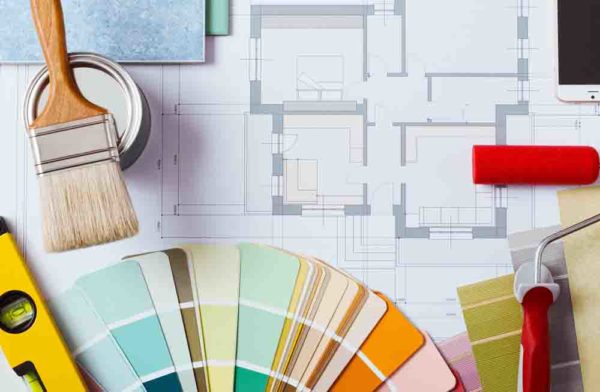Summary
In this activity, students will make design a room background for professional video presentations that is reflective of who they are. Students will complete a simple sketch.
Learning Objectives
- Learn the elements of design.
- Identify the elements of design process.
- Use creativity to connect elements of self to an image of professional self-representation.
- Generate ideas.
Icebreaker
Discussion: What is creativity and why it so valued by the top employers?
Or use the following to create a quiz or start a different discussion.
Pre-Activity Process Questions
- How would you describe your creativity?
- What is “design”?
- What are “professionalism” and “professional self-representation”?
Instructional Steps
(what the instructor does)
- Instructor will introduce the elements of design and the design process as well as techniques for how to generate ideas. Keep it basic.
- Scenario: Instructor will play the role of the employer in the following scenario and will describe the business (e.g., an architectural design firm). The students are recently hired. Due to social distancing, employees will be asked to telecommute and design an appropriate workspace at home, based on their current living space. The employer offers a “reasonable” budget, standard electronics (i.e., computer with camera, printer/scanner), and a desk.
- Students should be told the following:
- Design space should be professional in accordance with company culture and employees should remember that even though they will not be meeting clients in person, they are still “the face” of the organization.
- Design space should reflect something of the employee’s personality.
- Design space should reflect employee’s knowledge of the elements of design and the design process.
- Students will choose items for their backgrounds that will reflect their personalities, company culture and professional expectations.
- Students will use design elements and the design process to make their creative decisions. Students should not forget that the creative process requires trial and error and revision, so students should not be afraid of taking chances and trying out ideas.
- Students should choose from a variety of elements. There are many good consumer design sites and product selection sites from which students could browse to make decisions:
- elements: color, balance, contrast, line, symmetry, shape, repetition and rhythm
- wall material, paint, or wall covering
- accessories, such as shelving, artwork, furniture, flooring, windows
- lighting
- Students should choose a design composition and items they think best represents themselves and their company, and be able to explain those relationships or connections.
- Creativity is partly about connecting style choices to elements and objects in order to reflect feelings, emotions, personality, values, or a tone.
- Creativity always involves curiosity and often requires taking a chance, guesswork, and revision which also requires that one believe in oneself. The ability to make mistakes and to stay resilient are required to successfully create any idea, be it an essay or article, a musical composition, a manufactured prototype, a computer program, a scientific advance, whatever it may be. Anything new begins with the idea. The world values ideas.
Class Discussion Topics
- Why is it important to have options and resources when creating?
- What are techniques to improve creativity?
- Which careers require creativity (beyond artists)?
Artifacts:
(what the students produce to indicate completion)
- Students complete a sketch of the background of their rooms for video conferencing.
Evaluation
Post-Activity Process Questions
- What was the most important aspect of your office background design and how was it intended to reflect something of your character?
- How did your design use the elements of design?
- Did you encounter any obstacles in your design process? How did you overcome those obstacles?
Differentiation method
(to address learning styles and disabilities)
- Students can use technology or a series of pre-designed cutouts.
- Students can research pre-designed backgrounds and indicate choices they might use, and why.
- Students can complete a rough sketch of everything.
- Students can research the psychology of color.
Additional resources
Extension idea: For detailed components for instructors who wish to go deeper, see: Interior Design, Star Event https://fcclainc.org/compete/star-events. Students may create a design board, with related costs, and an idea of budget.
Vocabulary
- Creativity, the ability to transcend traditional ideas, rules, patterns, relationships, or the like, and to create meaningful new ideas, forms, methods, interpretations
- Design, a plan for form and structure
- Visual design elements, the components or building blocks of design, including color, balance, contrast, line, symmetry, shape, repetition, rhythm
- Balance, one of the elements of visual design, how symmetrical or equally weighted with visual interest, shapes, or color an image is perceived to be.
- Contrast, one of the elements of visual design, how unlike one area is perceived to be from another.
- Point, one of the elements of visual design, a particular place within the design or an area of interest.
- Line, one of the elements of visual design, horizontal, vertical, diagonal, or curved which carry differently perceived emotional feelings.
- Symmetry, one of the elements of visual design, reflection, rotational, translational used to convey areas of interest.
- Shape, one of the elements of visual design, a two-dimensional enclosed space.
- Repetition, one of the elements of visual design, amount of reusing other elements of design.
- Rhythm, one of the elements of visual design, using a pattern of elements of design.
- Style, a method or approach of the designer, a particular, overarching idea or tradition behind the design, meant to convey tone or feeling.
- Professional, anyone who gets paid for working, but especially one who works with a high level of skill. A term of respect.
- Professionalism, using the standing, practice, ethics, or methods of a professional.
- Self-representation, the way one presents oneself within social norms and expectations.


